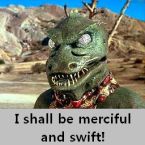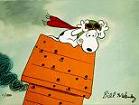wdolson
Posts: 10398
Joined: 6/28/2006
From: Near Portland, OR
Status: offline

|
quote:
ORIGINAL: geofflambert
If I missed someone saying so, if you are traveling near the speed of light and the radio transmitter were moving at the same speed and same direction either in front of you or behind you, there would be no doppler shift so you would hear your Slim Whitman or whatever it is you listen to just fine. 
On the OT, I believe we are in the early stages of an extiction event on the scale of the end of the Permian period. I pretty much agree with wdolson's estimate but I usually just say 1 billion. Besides a new ice age (which actually began about a thousand years back{don't quote me on that, I'm forgetting when exactly the current ice age cycle began, I might be way off as in much longer ago}) extreme drought over much of what is now arable land caused by the climate disturbance would also lower the limit. I'm afraid about 90% of all life from all the Kingdoms of life will disappear, and our own species will go extinct earlier rather than later. Al Gore is an optimist, I think the damage is already done and the outcome irreversible now. Our only chance would be if someone can figure out how to remove vast quantities of carbon dioxide and methane from the upper reaches of our atmosphere. If it could be done I'd guess the cost would be something like a million times what the Apollo Moon program cost, and the Congress will never pay for that. Sorry to be such a downer.
Technically we are in a warm period of an ice age that started about 1 million years ago. This warm period started about 14,000 years ago. Before that the Earth was locked in ice in the northern and southern regions for about 20,000 years. Many parts of the Earth remained ice free and there was a lot more land in the equatorial region because the oceans were much lower than today. The Mediterranean existed, but it was probably about the size of a couple of the great lakes. The places at sea level now were way up in the mountains.
The ice was not uniform across the globe. On the west coast it only came down as far as Seattle (same latitude as Montreal), but was down to about NY City in the east. Most of modern Europe was unusable. The Pacific Rim was very different from the Atlantic. As the oceans fell, the Aleutians turned into a mountain range separating the Arctic from the Pacific. About half of Alaska was ice free as a result, though it was probably pretty cold. The western US deserts were pretty nice with high rainfall and lush vegetation. The San Joaquin Valley in California that now grows 50% of the US's produce was mostly a giant inland sea.
About 1000 years ago we had the Medieval Warming where world temperatures were much warmer than today. During this time the vikings explored westward and set up self sustaining colonies in Iceland and Greenland. Greenland was called Greenland because the southern end of it was grassland. England was known for it's fine wines.
About 1600 this reversed and we went into what's called the Little Ice Age which lasted until about 1850. The Little Ice Age didn't have ice sheets or anything, but the winters were much colder than they are now. Ice skating on the Thames in winter was pretty common. The New World was settled by Europe during this period.
From 1850 to now, the world has been warming a bit. So far it hasn't been as dramatic as the Medieval Warming, but it could go that way. We only have monastery records to indicate how the Warming started and they are very subjective. On the other hand, world weather spiked hotter in the 1930s (one of the hottest decades in modern world history), then settled into a cooling trend from 1940 to 1975 before warming again. The winter of 1944-45 was one of the coldest in Western Europe in 100 years. Along the US west coast the coldest winter on record was 1949-50. It snowed in Los Angeles and the Pacific Northwest set snow fall records.
The ice records from Lake Vostok, which is one of the best long range histories of world icing going back over 100,000 years shows that major ice periods are often preceded with a spike up in world temperatures. The resolution of the data can't tell if the spike lasts for a couple of years or 50, but it's usually very short in geologic time. It is possible that we're starting an icing period. It's about time for it to start. The relatively ice free periods usually last 10,000-15,000 years, so we're on the long side for the window now.
Most geologists look at the climate and say "who knows what happens next". The geologic record shows that the last 100 years is not terribly clear of anything significant. It could mean nothing, small shifts one direction or another, or a major shift not seen in recorded human history. We don't have enough data to know.
Bill
_____________________________
WitP AE - Test team lead, programmer  |
 Printable Version
Printable Version
























 New Messages
New Messages No New Messages
No New Messages Hot Topic w/ New Messages
Hot Topic w/ New Messages Hot Topic w/o New Messages
Hot Topic w/o New Messages Locked w/ New Messages
Locked w/ New Messages Locked w/o New Messages
Locked w/o New Messages Post New Thread
Post New Thread